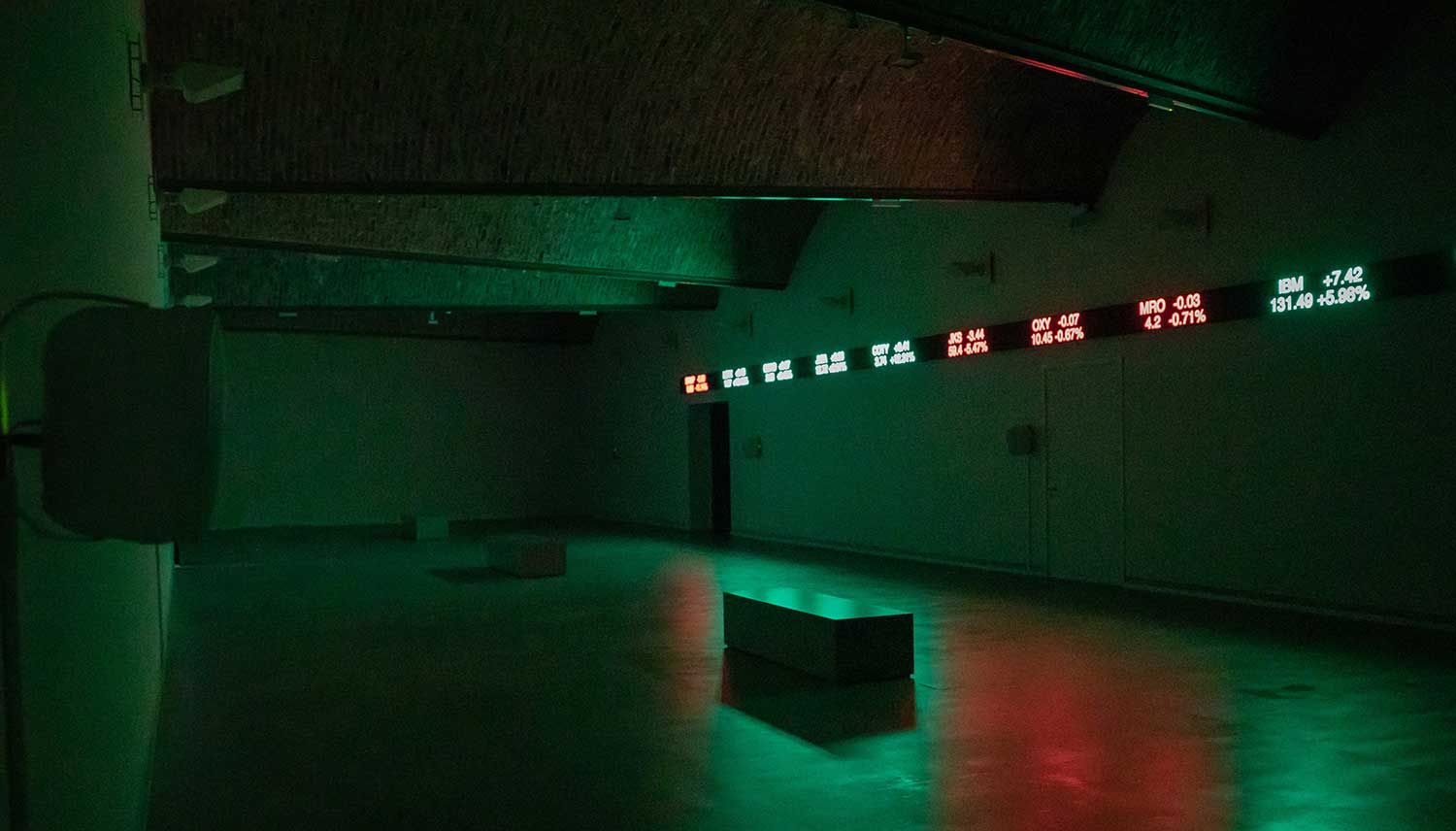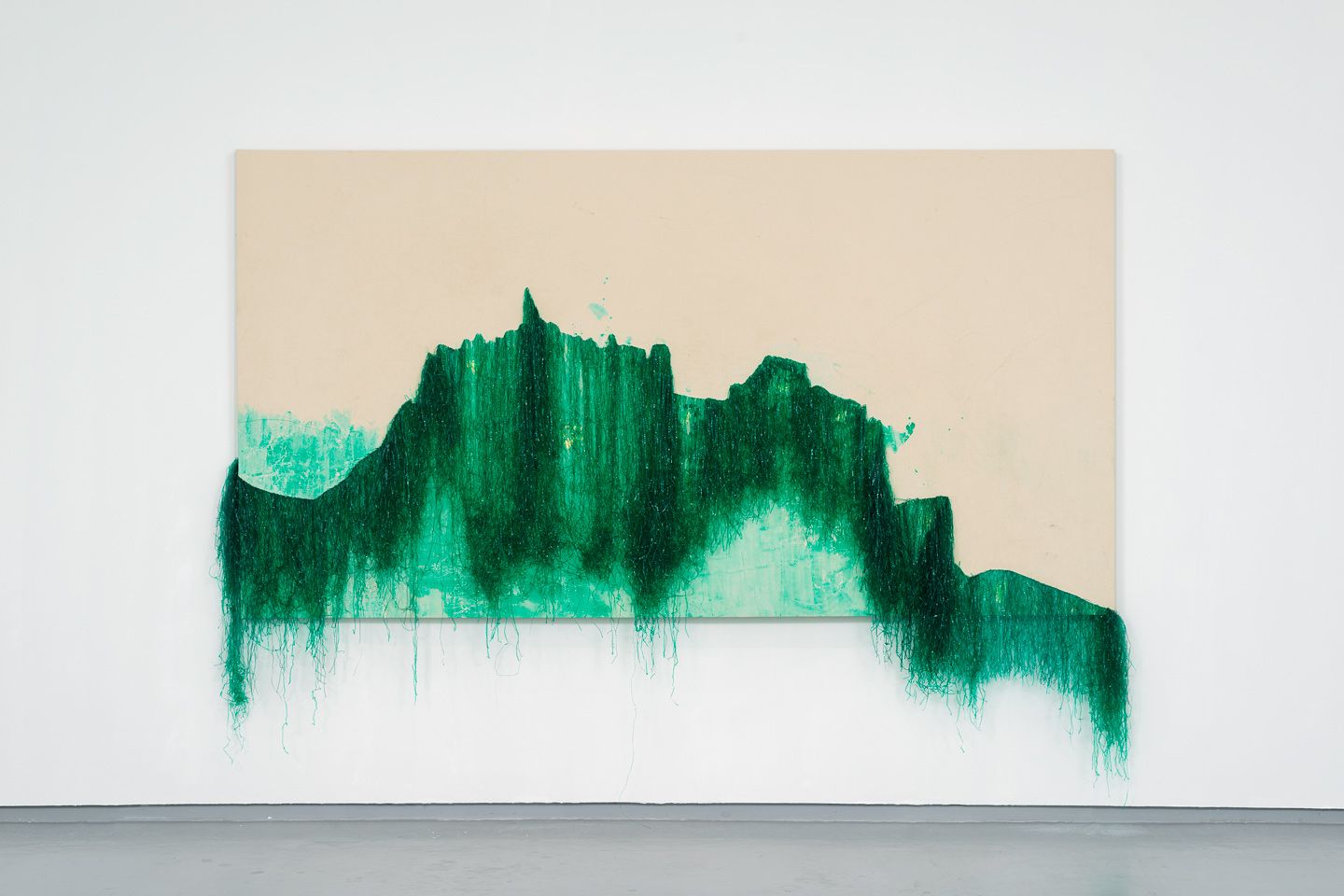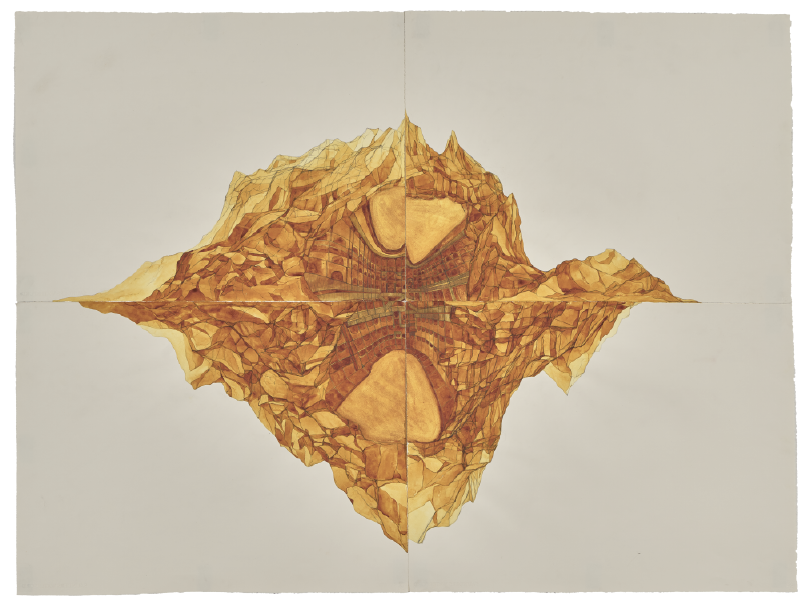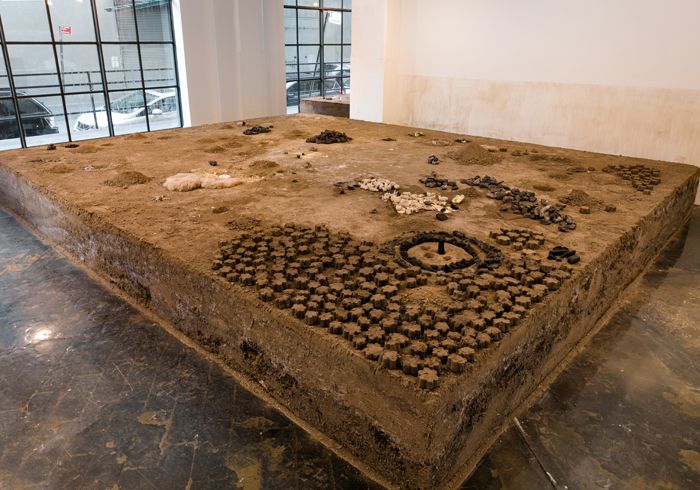Emeka Ogboh, The Way Earthly Things are Going (2017) Multichannel sound installation

Not all conversations are captured in these texts, and only a small fraction of the content. I also chanced upon loads of sources and works, resources and references that do not directly relate to either climate or visual arts but expanded my understanding of both. Like for instance this audio installation by Nigerian sound and installation artist Emeka Ogbo, The Way Earthy Things Are Going (2017). Bonaventure Soh Bejeng Ndikung explains that Ogboh explores “how private, public, and collective memories and historiographies are translated, transformed, transcribed” and in this work “deliberates sonically on the multiple effects and manifestations of states of crisis.”
In a sense, this project had similar goals: translating, transforming and transcribing multiple approaches for addressing a pervasive state of (climate) crisis, one that is often abstract, distant, and complex, while at the same time is contributes to growing feelings of sadness, hopelessness, and anxiety. This is far from an exhaustive list, but provides a starting guide for involvement in, with, and through art for meaning-making, new narratives and images, and metaphors for climate change.
Glossaries
Charismatic Facts: a conceptual framework, an open possibility for asking what language can accomplish, how can climate facts be honed and taken up for immediate use.
The Anthropocene Atlas of Geneva Glossary: offers entries and pathways for feeling, thinking about, and critically reflecting on socially caused planetary change. These “glosses” of keywords are meant to provide initial orientation to a dynamic situation of emerging knowledges and reflection, and to indicate some relevant sources and research communities; they are not meant to constitute, already or too quickly, an exhaustive compendium of completed concepts (definitions).
The Green Artist’s Glossary for Sustainable Design: a lexicon of sustainable terms from The School of the Art Institute of Chicago (SAIC).
Lapham’s Quarterly Climate Glossary: from absolute drought to zephyr, the language of the environment and weather.
Reading
The July 20 2020 Issue of Time Magazine: from politician Stacey Abrams to soil scientist Asmeret Asefaw Berhe, and Ayana Johnson’s excellent also has a piece in this issue called “We Can’t Solve the Climate Crisis Unless Black Lives Matter.”
Climate Politricks, Africa’s a Country: series on climate justice, tax justice and extractives in African spaces.
8 best climate emergency books to help you better understand the crisis, The Guardian (2020)
General interest sites/organisations/ projects
Artists and Climate: a blog tracking the artistic work about climate change everywhere from opera houses and hip hop poetry slams, in established galleries and on-the-fly exhibitions, in off-Broadway houses and regional theatres. It is both a study of what is being done, and a resource for anyone interested in the subject.
Center for Sustainable Practice in the Arts: a Think Tank for Sustainability in the Arts and Culture. Their activities include research and initiatives positioning arts and culture as a driver of a sustainable society.
Dear Climate: a collection of agitprop posters and meditative audio experiences that help people meet, befriend, and become climate change.
Everyday Climate Change: an Instagram page made up of a diverse group of photographers from 6 continents, documenting climate change through photography.
Extraction: Art on the Edge of the Abyss: a multimedia, multi-venue, cross-border art intervention that will investigate extractive industry in all of its forms (from mining and drilling to the reckless exploitation of water, soil, trees, marine life, and other natural resources).
The Climate Music Project: harnesses music as a universal language to tell the urgent story of climate change to broad and diverse audiences in a way that resonates, educates, and motivates.
Arts & Climate University Courses: a list of courses, some with syllabi included
Intersectional Environmentalism:platform for resources, information and action steps to support intersectional environmentalism and dismantle systems of oppression in the environmental movement, led by environmental activists and sustainability advocates.
Feral Atlas: Seventy-nine field reports from scientists, humanists, and artists show you how to recognize “feral” ecologies, that is, ecologies that have been encouraged by human-built infrastructures, but which have developed and spread beyond human control. These infrastructural effects, Feral Atlas argues, are the Anthropocene.
Museums
The Jockey Club Museum of Climate Change (Hong Kong): the first museum of its kind in the world was was established at The Chinese University of Hong Kong (CUHK) and offers an interactive, multimedia exhibition that showcases valuable collections and information about climate change.
The Museums of the FutureNow (online): an evolving series of speculative artworks and participatory workshops designed to explore the web of ecological, cultural, technological and political factors that combine to create complex challenges for society and environment both now and in the future.
The Museum of Tomorrow (Rio): a science museum meant to explore, imagine, and conceive all the possibilities for constructing the future.
The Climate Museum (New York): interdisciplinary programs that aim to build community around climate education and solutions
Museum of Water (London): a collection of publicly donated water that tells stories of the people and places it comes from.
A selection of thought provoking works
The Climate Cinema, compiling Climate-related films on a range of topics.
Olafur Eliasson, Glacier Melt Series (1999/2019): “The glacier melt series 1999/2019, brings together thirty pairs of images from 1999 and 2019 to reveal the dramatic impact that global warming is having on our world.”
Leonard, James (2015) ,Tent of Casually Observed Phenologies (‘climate change related tarot readings’)
Pekka Niittyvirta and Timo Aho, Lines (57° 59′ N, 7° 16’W): an interactive site specific light installation located @ Outer Hebrides. By use of sensors, the installation interacts with the rising tidal changes; activating on high tide. The work provides a visual reference of future sea level rise.
Ai WeiWei, Roots (2019): sculptural works in iron, cast from giant tree roots sourced in Brazil
Sindi-Leigh McBride
Researcher and writer from Johannesburg, and a PhD candidate at the Centre for African Studies, University of Basel.
2. Communicating without aestheticizing or academicizing

Conversation with Angela Chan, creative climate communicator Read more
3. Knowledge production as radical sharing and curation as care

Conversations with Bukola Oyebode and Danielle Bowler, editors Read more
4. Dialogic processes, decolonial pedagogic practice and humanizing history

Conversation with Nomusa Makhubu and Nkule Mabaso, curators Read more

